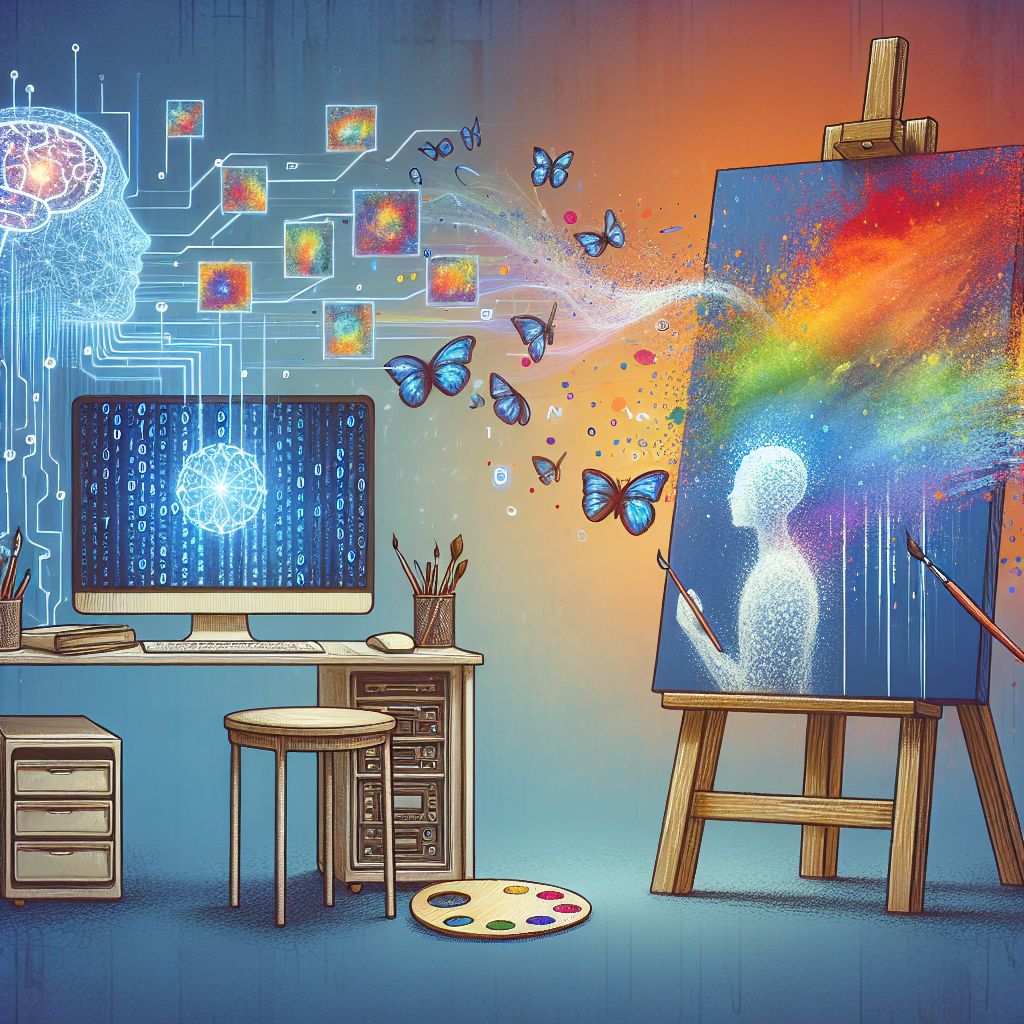Artificial intelligence (AI) has become an increasingly prominent force in the realm of creativity. From assisting in the creation of music, art, and literature to designing innovative products and services, AI is revolutionizing the way we think about creativity. But is AI’s role in creativity a love story or a nightmare? Let’s explore both sides of the argument.
On one hand, AI has the potential to enhance and amplify human creativity in ways we never thought possible. AI algorithms can analyze vast amounts of data and generate insights that can inspire new ideas and spark innovation. For example, AI-powered music composition tools can help musicians explore new melodies and harmonies, while AI-driven design tools can assist artists in creating stunning visual graphics.
Furthermore, AI can help creative professionals overcome common challenges such as writer’s block, lack of inspiration, or limited resources. By providing a wealth of information and resources at their fingertips, AI can empower creatives to push the boundaries of their creativity and produce more impactful work.
Additionally, AI can democratize creativity by making creative tools and resources more accessible to a wider audience. For example, AI-powered design platforms like Canva or Adobe Spark allow individuals with no design background to create professional-looking graphics and visuals with ease. This democratization of creativity can lead to a more diverse and inclusive creative landscape, where individuals from all walks of life can contribute their unique perspectives and ideas.
On the other hand, some argue that AI’s role in creativity poses significant challenges and risks. One of the main concerns is the potential for AI to replace human creativity altogether. As AI algorithms become more sophisticated and capable of mimicking human creative processes, there is a fear that AI could eventually outperform humans in creative tasks, leading to a devaluation of human creativity and originality.
Moreover, there are ethical concerns surrounding AI-generated content, particularly in the realm of art and literature. How do we attribute authorship and ownership of AI-generated works? Who owns the rights to AI-generated music, art, or literature? These questions raise complex legal and moral dilemmas that will need to be addressed as AI continues to play a larger role in the creative process.
Another concern is the potential for AI to perpetuate biases and stereotypes in creative work. AI algorithms are trained on existing data sets, which may contain biases and prejudices inherent in society. As a result, AI-generated content may inadvertently reinforce harmful stereotypes or discriminatory practices, leading to a more homogenous and exclusionary creative landscape.
Despite these challenges, many believe that AI and creativity can coexist harmoniously, with AI serving as a valuable tool for enhancing and expanding human creativity. By leveraging the strengths of AI in data analysis, pattern recognition, and automation, creatives can focus on the more nuanced and imaginative aspects of their work, leading to more innovative and impactful creations.
In conclusion, the relationship between AI and creativity is a complex and multifaceted one, with both opportunities and risks to consider. While AI has the potential to revolutionize the creative process and unlock new possibilities, it also raises important ethical and societal questions that must be addressed. Ultimately, the future of AI and creativity will depend on how we navigate these challenges and harness the power of AI to enhance, rather than replace, human creativity.
FAQs:
1. Can AI be truly creative?
While AI algorithms can generate novel and innovative content, the question of whether AI can be truly creative is still up for debate. Some argue that true creativity requires a level of consciousness and intentionality that AI lacks, while others believe that AI’s ability to produce unexpected and original content qualifies as creativity.
2. Will AI replace human creativity?
While AI has the potential to augment and enhance human creativity, it is unlikely to replace it entirely. Human creativity is inherently tied to our emotions, experiences, and values, which AI cannot replicate. Instead, AI is more likely to serve as a valuable tool for supporting and expanding human creativity.
3. How can we ensure that AI-generated content is ethical and unbiased?
To address concerns about bias and discrimination in AI-generated content, it is important to carefully curate and monitor the data sets used to train AI algorithms. Additionally, transparency and accountability in the development and deployment of AI tools can help mitigate potential ethical issues.
4. What are some examples of AI-powered creativity?
There are numerous examples of AI-powered creativity in various fields, including music composition (e.g., Amper Music), visual art (e.g., DeepDream), and literature (e.g., Botnik Studios). These tools leverage AI algorithms to assist creatives in generating new ideas, exploring different styles, and pushing the boundaries of their creativity.

